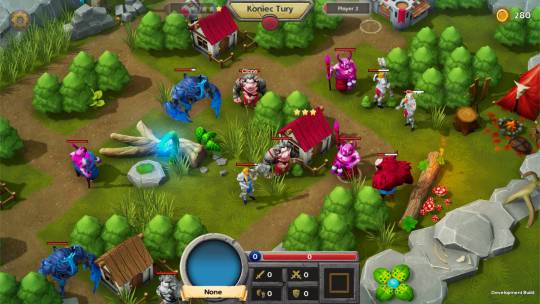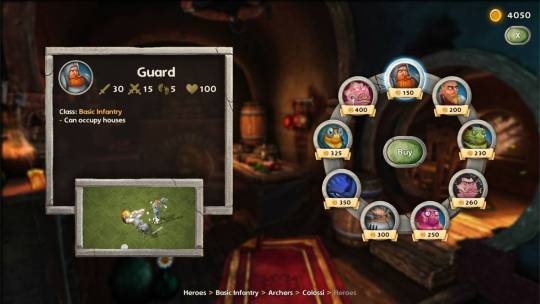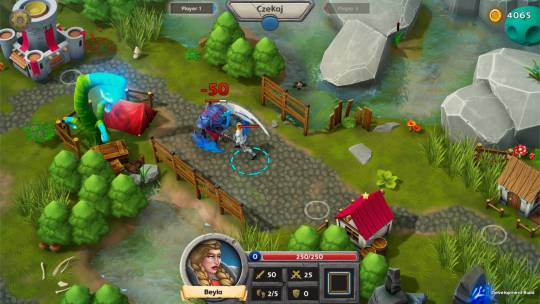#is she playing 3D chess or tic tac toe
Explore tagged Tumblr posts
Text
How hilarious is it that Kreia finds out Atton is a former Jedi hunter/torturer/murderer and is immediately like “Perfect. Babysit my Jedi.”
#atton rand#kotor ii#atton#female exile#meetra surik#knights of the old republic#the Sith Lords#sw kotor 2#god i love her#what even#is she playing 3D chess or tic tac toe#kreia
151 notes
·
View notes
Link
via Politics – FiveThirtyEight
What game is President Trump playing? By that I mean what actual game is he playing?
Trump’s political performance, in seriousness and in jest, has often been likened to chess. Even to three-, four-, eight-, 10- and 12-dimensional chess. His proponents argue he’s a grandmaster,1 and his detractors argue he’s a patzer. CNN’s Chris Cillizza has written two different articles accusing Trump of playing “zero-dimensional chess,” whatever that means. Even Garry Kasparov, probably the greatest actual chess player of all time, has weighed in, inveighing against the use of this gaming cliche via Politico.
In my job here at FiveThirtyEight, I spend a lot of time thinking about games — board games, video games, chess tournaments, math puzzles, the game theory of international affairs. So I understand that “playing chess” is easy shorthand for “doing strategy” or “being smart” or whatever. But I think we can do better. I humbly propose to you that Trump is not playing chess (of any dimension), but rather something called “ultimate tic-tac-toe.” It’s time to update your tropes.
As quickly as I can, the rules: Ultimate tic-tac-toe, sometimes called fractal tic-tac-toe or meta tic-tac-toe or tic-tac-tic-tac-toe-toe, is played on a three-by-three grid of three-by-three grids. It looks like this:
Each of the nine small subgrids is a familiar game of tic-tac-toe. Win the small game in one of those subgrids, and you get to claim it with a big “X” or “O,” which counts as a square in your favor in the larger game. Winning the larger game is your ultimate goal — essentially you want to win three games of tic-tac-toe in the same column, diagonal or row.
But here’s the catch: Where your opponent moves dictates where you move, and vice versa.
For example, if I begin by placing my X in the upper-left corner of one of the small grids, you must then place your next O somewhere in the upper-left grid. Your play there then dictates the grid where I have to make my next play, and so on.2
Yannick Rietz
(You can play the game for yourself here, as built by Vikesh Khanna.)
Playing a few games of ultimate tic-tac-toe makes you feel in your very guts what it’s like to be a close watcher of the last two years of news cycles.3 (I’d have to assume it feels like that inside the White House, too.) Ultimate tic-tac-toe is a superbly tidy distillation of the strategy of distraction, delay, misdirection, procrastination and improvisation.
This is a game of past and present. While chess offers a singular goal — capture the opponent’s king — ultimate tic-tac-toe offers fluid, shifting goals. The latest happenings (Scott Pruitt) can feel far removed from past events that come back to rear their heads (Stormy Daniels).
Ultimate tic-tac-toe is a game of frustration. Good chess players develop a single plan and try to see it through. Ultimate tic-tac-toe players cannot do this. One plan (Infrastructure Week) can quickly go off the rails (Comey). The next plan (Infrastructure Week) can quickly suffer a similar fate (resignation of an aide).
Ultimate tic-tac-toe is a game of confusion. In chess, there is but one battlefield. In ultimate tic-tac-toe, there are many, both local and global. Those battlefields interact with each other in weird and complicated ways. The local ones (recurring Twitter fights) bear little immediately obvious relationship to the global one (the welfare of the American people).
The net result: Even good ultimate tic-tac-toe play looks haphazard, facile and even plain stupid at first glance. There is no clear or elegant strategy.
None of this tic-tac-toe stuff is meant to diminish the complexities or subtleties of the current political moment. Chess is famously complex, of course — there are more possible chess games than atoms in the universe and so on. But ultimate tic-tac-toe is no slouch. To get a very rough upper bound for the number of possible games, we can imagine that there are 81 places the first move can go, then 80 places for the second, then 79, then 78 and so on. That leads us to the number 81!, or roughly 6 followed by 120 zeros.4 That’s incomprehensibly large (and doesn’t even take into consideration the game’s weird and complicated game tree). Even computers struggle to play it well.
So is Trump playing his game well or poorly? I have no idea. All I really know is: It ain’t chess. Please craft your takes accordingly.
1 note
·
View note
Note
Shaw + 27. Finch + 1. Reese + 19. Root + 22. For the ask meme!
(excessively detailed headcanons?)
Shaw: 27. What is their biggest regret?hmm – not being able to save Cole or Carter, I think? Shaw tends to be fairly deliberate in her actions, so I’d say her regrets lie more towards things she wasn’t able to do for some reason or another
Finch: 1. What does their bedroom look like?on the one hand, the birb’s paranoid enough that he wouldn’t leave things lying around carelessly imo, even out of his cover identities... but on the other hand, if Finch ever manages to deem any place secure enough, I think it’d eventually morph into something like the Library – books everywhere in slightly haphazard piles, chalk/glass boards and a laptop to jot stuff down in case he thinks of something in the middle of the night (the actual computer setup is in another room of its own ofc)
Reese: 19. What do they think about before falling asleep at night?in all likelihood, about whoever he’d met that day, and if there’s anything else he can do to help them? also things like “gotta clean my rifle in the park tomorrow morning”, presumably
Root: 22. Given a blank piece of paper, a pencil, and nothing to do, what would happen?...okay I swear I had a more serious answer for this question but I just got the mental image of Root playing 3D tic-tac-toe with TM a la that chess scene and now I can’t stop laughing
#Harold walks in towards the end of the game#'I did not create an ASI for you to play tic-tac-toe with'#'well it /is/ a strategy game Harold – I'd say it's right up Her alley don't you think?'#'...I think an X in that corner would be prudent'#'oh are you teaming up with Her against little old me? how sweet – I'll do my best'#......heh#person of interest#potcpoi#asks
1 note
·
View note
Text
Solid9 Studio and Exorder: A Story of Perseverance
Once upon a time in a land far, far away two brave Knights of Coding decided to create a tactical fantasy game. They set off on a journey and survived many adventures, including an encounter with a stranger bearing a poisoned apple. This is the tale of Solid9 Studio and their game, Exorder.
Level 1. Let’s code the game!
It all began in 2012 in Warsaw, Poland. Sebastian Sztangierski and Dawid Członka, two young programmers working for Samsung’s mobile division, decided they would rather write games. They came up with a mobile platformer called Kentucky Robo Chicken. The game had to be simple because they could only work on it after working hours. Both Sebastian and Dawid were coders so they started with mechanics and outsourced graphics to a mutual friend.
“At the start we were writing the game for Android in Java,” Sebastian says as we are sitting at the studio’s headquarters. “Then, we decided to make our own engine from scratch.” And that was, so to speak, a level 1 idea, noble but very time-consuming. The studio needed to develop.

Exorder, now almost finished
Level 2. Middleware and time/resource evaluation
Working on their own engine gave the team a deeper understanding of its inner workings. Very valuable experience - but it was time to move on. “We wanted to make the game, not the engine,” Dawid says. The KRC game development moved on to the early version of the Unity engine. Luckily, the transition from Java to C# went smoothly. The team learned to evaluate their time and think further ahead.
Health Points lost: Self-publishing without promotion
Kentucky Robo Chicken was ready in June, 2013. The Solid9 Studio guys decided to publish the game on Google Play and Apple’s App Store - on their own. What could go wrong, right?
“That was our huge mistake,” Sebastian says. “We were working on KRC trapped in a basement like some Gollums. We didn’t do anything to promote the game, no one knew about it. The game was free, but at the last minute we implemented optional in-app purchases and just - released it. Eventually, we reached one hundred thousand downloads and that was only thanks to the help of our friend, a home-grown marketing wizard. After a year we had earned enough to buy four beers.”
But no tears were shed. Lessons were learned, experience points for finishing the game were gained and it was decided to keep making games. It was time to get to another level.
Level 3. A bigger game and the first investor
At the end of August, 2013, Solid9 Studio came up with an idea for a clever tactical turn-based game for mobile platforms. Set with a fantasy backdrop and beasts and knights. They named the game (ahem) Beasts and Knights but eventually changed it to Exorder.
It was going to be one of those “easy to learn, hard to master” games with a two player skirmish mode played a little like chess. Once you got acquainted with all the units, as well as their skills and the mechanics of buying them during the game, you could start thinking on how not to waste any of your turns.
Sebastian took a four-month unpaid sabbatical to devote all his waking hours to the new game. The move was risky but it gave the project a nice starting boost. It also gave the team a taste of what it would be like to work full-time on the game. At that point they just knew they needed to attract an investor to go pro.
And they did! “Thanks to the investor we were able to hire two artists and change Exorder’s graphics from 2D to 3D,” Dawid says. They could also start thinking about making it a PC game with an additional single player campaign. The latter would make Exorder somewhat similar to X-Com games. It was in late summer, 2014, and the prospects were looking good.

Exorder: that's how it started
Health Points lost: Poisoned apples
Unexpectedly, the project started to derail creatively due to some advice from a friendly games industry insider. He convinced the team that Exorder had to be fresher, more unique - the original idea was too simple. “This stewed in our heads. We started to come up with unnecessary additions to the game: rogue-like mechanics, a hack and slash flick... We lost over a year for that,” Sebastian says.
The studio ended up with a lot of new elements which didn’t stick together. At some point they spread themselves too thin and the project started to drift without direction.
On top of that the investor suddenly stopped paying and there was no way to force him as the team had nothing on paper – just an oral contract. Repeat after me, people: thou shalt conclude written contracts!
“We already gave up our jobs to work on the game and we had no money to pay our artists,” Dawid says. Eventually, in 2016, those two crises smothering them at once, Sebastian and David decided to lay off the artists and put the game into sleep mode. They needed to rest and to think everything through. They needed to regain their vision.

Buy a guard, earn money by occupying houses
Level 4. A contract with a publisher
For months Sebastian and Dawid regenerated their HP by writing applications and software solutions for various customers. And then, in 2017, a mutual friend put them in contact with Fat Dog Games, a Polish indie publisher (and my employer) willing to invest in promising projects. And the idea of Exorder was promising – the original, I mean. “We decided to cut off all those strange additional elements and to go back to our original vision,” Sebastian says. “We didn’t want to be the gaming revolution anymore. We wanted to make something we would like to play. Something nice looking, simple and well-proven.”
To say the contract was a game-changer would be... a horrible pun, so let’s start again. Thanks to that move the team could afford to work full-time on Exorder, hire a couple of freelance artists and invite a game designer to join the project. Said designer, Michał Sroka, took care of the story and the campaign progress, also balancing the gameplay and creating new units.
Michał is also the guardian of the vision. “Not having a person who cares about the overall shape of the game is a huge mistake. That’s why many games made by only programmers have poor ratings,” Sebastian says. “Sometimes you concentrate on the small elements so much you have no time to look at how these elements fit into the whole,” Dawid adds.

Respect the queen, she strikes like a pneumatic hammer
Level 5. Profit?
So what’s the current vision of Exorder? It’s still a fun and seemingly simple, yet deeply tactical, turn based game with a single player campaign and two-player skirmishes, both online and offline. It doesn’t overcomplicate things with dozens of meaningless attributes, statistics or charts, but engages the player with simple mechanics that encourage strategic thinking. And it looks just lovely and bright, still holding on to that fantasy setting.
The team learned a lot during the last five years. What advice would they offer to those who are thinking about making games? “Do it progressively,” Dawid says. “First write a code for something like Tic Tac Toe, then create a simple walk-and-shoot game, and then - The Witcher.”
Exorder will be released in Q1 2018. You can check it out on Steam or Facebook.
0 notes